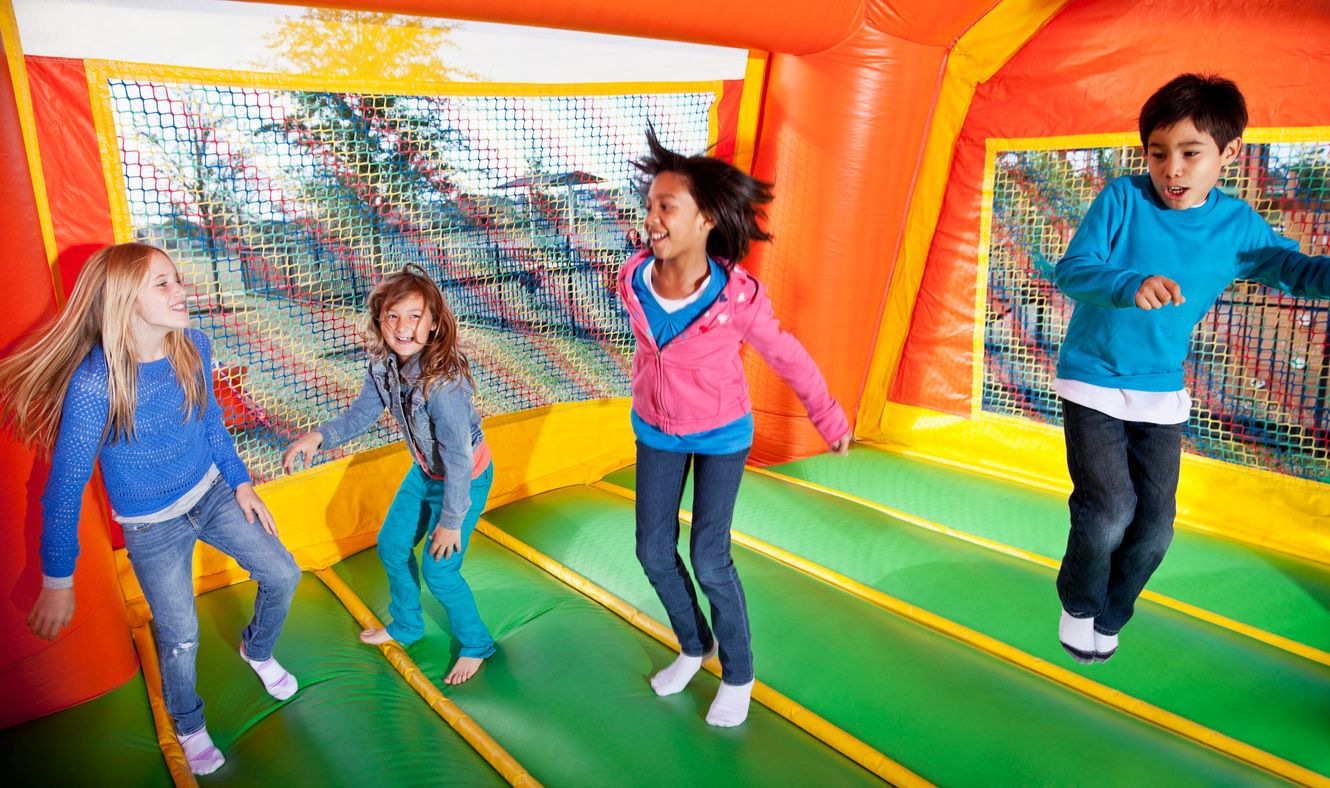It’s a sunny summer afternoon, a perfect day to host a picnic at your ministry. Children are laughing and jumping around in a brightly colored inflatable bounce house. Everything seems perfect until a sudden gust of wind lifts the inflatable off the ground.
Inflatable amusements like bounce houses, slides, and mazes can provide a lot of fun for children. They also can lead to fractures, sprains, knocked out teeth, burns, and head injuries. Your ministry team can prevent many of these injuries by following manufacturers’ guidelines for set-up, operation, and supervision.
Before You Bounce
The event planning you do with your team is an important step when it comes to inflatable safety. Use these tips to help your organization hold a fun, safe event:
Consult your insurance agent. Discuss your ministry’s liability exposure with your insurance agent before the event.
Choose a reputable rental company. Rent inflatables from a company that employs trained and experienced staff. Whenever possible, arrange for the rental company’s staff to set up and operate the equipment.
Get written instructions. Obtain written instructions on how to safely use the equipment and have an attorney review the rental contract before signing.
Verify insurance coverage. Ensure the rental company provides written proof of a current liability insurance policy.
Setting Up Inflatables
Inflatables are heavy, bulky, and awkward to move. To secure them properly, they must be anchored to the ground, possibly with additional sandbags for weight. Pay attention to these details during setup:
Check weather conditions. Avoid setting up inflatables in high winds, rain, or lightning.
Prepare the ground. Place a tarp on the ground to protect the bottom of the unit, or clear all debris from the area if no tarp is available.
Anchor properly. Use every anchor point provided, along with the recommended sandbags or weights.
Inspect the unit. Ensure there are no rips or tears, and that the unit fully inflates without sagging.
Place safety mats. Cover hard surfaces with impact-absorbing mats or have spotters supervise these areas.
Supervising the Fun
Good supervision is essential for keeping inflatable users stay safe. Share these guidelines with everyone who will be keeping watch over the inflatable activity:
Provide continuous supervision. A responsible adult must supervise the inflatable at all times.
Remove sharp objects. Participants should remove shoes, jewelry, eyeglasses, hair clips, and other sharp objects before entering the inflatable.
Prohibit food and drink. No food, drink, or gum should be allowed inside the unit.
Separate age groups. Separate children of different ages and abilities to prevent larger children from accidentally hurting smaller ones.
Prevent rough play. Prohibit flips, rough play, and sitting or lying down while others are bouncing.
Monitor fatigue. Remove children from the inflatable once they tire.
Respond to deflation. If the unit deflates, remove occupants immediately.
Watch the weather. If winds, rain, lightning, or other unsafe conditions arise, evacuate the inflatable and turn off the blower motor until conditions improve.
Special Notes for When High Winds or Hot Weather Come to Play
Strong winds can pose significant dangers during outdoor activities. At wind speeds of just 15-25 miles per hour, inflatable bounce houses can pull loose from their stakes and blow away, causing injuries. The National Weather Service issues high wind warnings for steady winds above 40 mph or gusts greater than 58 mph. If such conditions arise, consider postponing outdoor activities until it is safe.
Hot weather poses risks for many outdoor activities, including the use of bounce houses and inflatables. Here’s what to watch for and ways to minimize the risks:
Surface Burns - The vinyl surfaces of inflatables can become extremely hot under direct sunlight, increasing the risk of burns, especially for younger children.
Shade and Cooling - If possible, set up inflatables in shaded areas or use canopies to provide some relief from the sun.
Material Degradation - Extreme heat can cause the material of the inflatable to degrade faster, potentially leading to tears or punctures
Regular Inspections - Frequently check the inflatable for any signs of wear and tear, especially if it's been exposed to high temperatures.
Dehydration and Heat Exhaustion - Prolonged exposure to high temperatures can lead to dehydration and heat exhaustion. Ensure participants stay hydrated and take regular breaks in shaded areas.
Hydration Stations - Bouncing can be hard work. Keep kids hydrated by providing easy access to drinking water.
Now that you have the risk management basics for adding inflatables to your outdoor activities – don’t forget to check in with your insurance agent for assistance.
This article from the Safety Library at Brotherhood Mutual Insurance Company is used with permission. The information provided is intended to be helpful, but it does not constitute legal advice and is not a substitute for the advice from a licensed attorney in your area. We encourage you to regularly consult with a local attorney as part of your risk management program.
Article updated April 2024.

